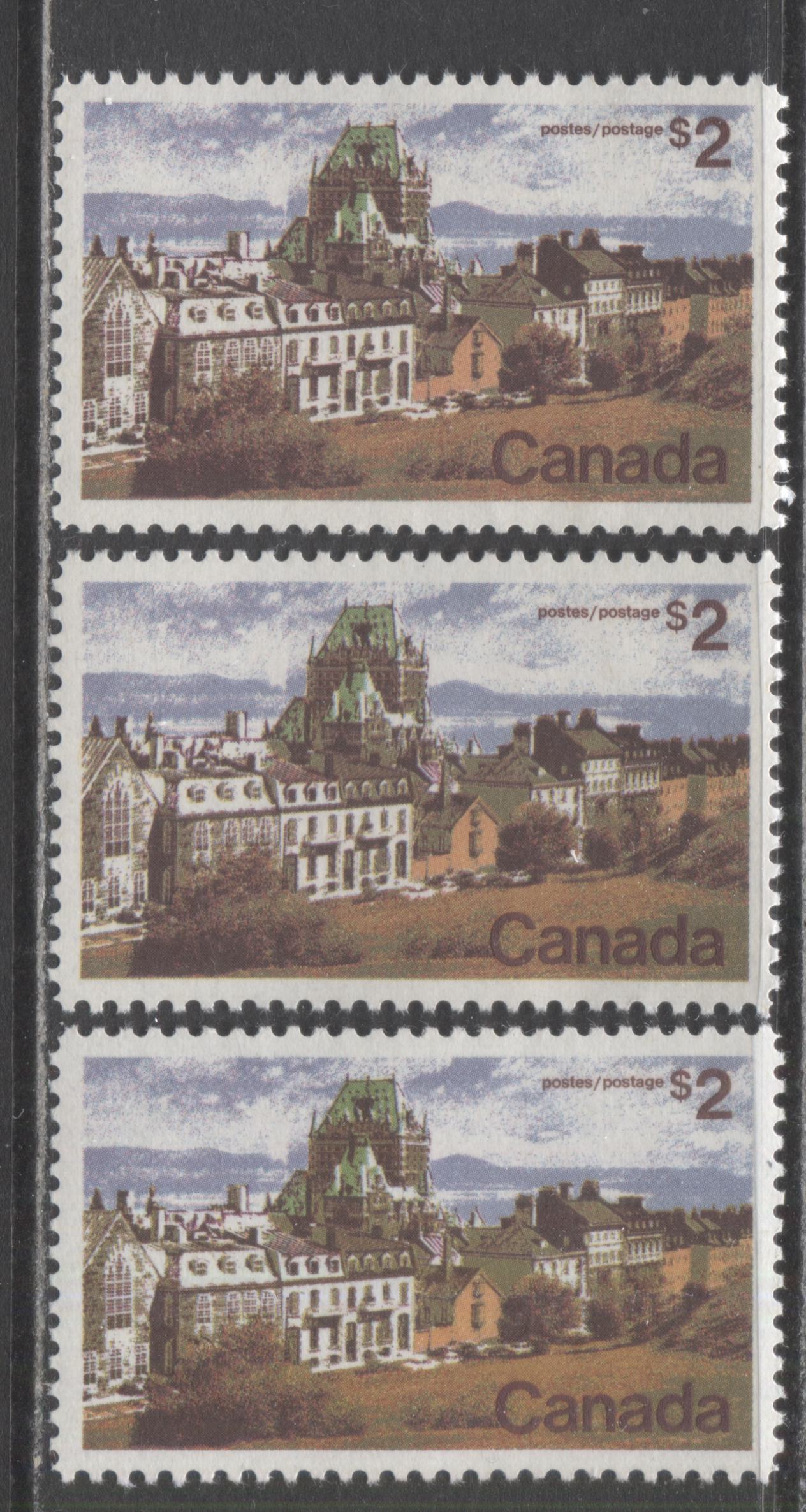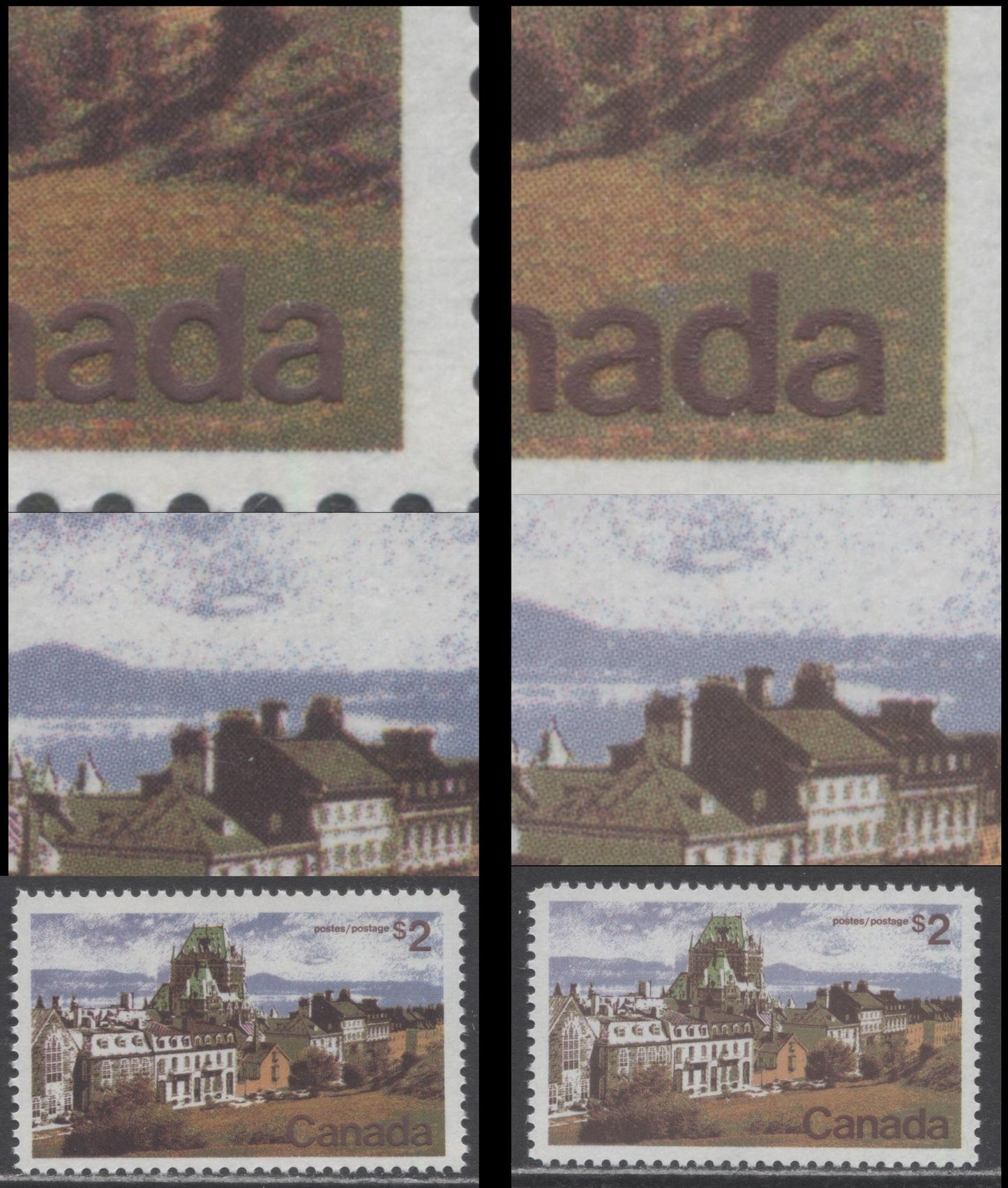Brixton Chrome
Canada #601 $2 Multicoloured Quebec City, 1972-1979 Landscape Definitive Issue, 3 VFNH Singles Plate 1, F/LF3-fl, MF6/LF4-fl and MF6/LF4 Papers
Canada #601 $2 Multicoloured Quebec City, 1972-1979 Landscape Definitive Issue, 3 VFNH Singles Plate 1, F/LF3-fl, MF6/LF4-fl and MF6/LF4 Papers
Couldn't load pickup availability
3 VFNH singles of the $2 multicoloured Quebec City from the 1972-1979 Landscape Definitive Issue plate 1, F/LF3-fl, MF6/LF4-fl and MF6/LF4 papers. Includes: (1) F/LF3-fl paper with very few LF & MF flecks; (2) MF6-fl/LF4-fl with very sparse LF fibres; (4) MF6/LF4 paper with almost no fluorescent flecks. Contrary to what Unitrade says about it being impossible to distinguish plate 1 from plate 2, it is in fact possible to distinguish singles from these plates. Two characteristics are used: (1) colours and (2) paper fluorescence. With regards to colour, the plate 2 stamps have colours that are fuller and deeper in general, compared to plate 1's which look tired by comparison. The difference is most notable on the brown black of the side of the building in the right background, as well as the darker part of the bushes, where on plate 2 it is a very deep and solid brown black, while on plate 1 it is a bit washed out, being just a very dark brown. With regard to paper fluorescence, both plates are similar on the face, but the plate 2 stamps are much, much brighter on the back. Plate 1 stamps are usually LF on the back with visible fluorescent flecks that range from very few to sparse. Plate 2 stamps are usually HF8 or MF7 on the back and show very little in the way of fluorescent flecks.
Unitrade values this at $18, treating the unlisted varieties as the closest equivalent listed varieties. The stamps offered here grade 80 as follows:
Centering/Margins: 50/70
Paper Freshness: 5/5
Colour: 5/5
Impression: 5/5
Absence of Visible Paper Flaws: 5/5
Perforations: 10/10
The landscape definitives of 1972-1979 are a particularly complex area, with many of the compexities not being listed in Unitrade. Unitrade's description of paper fluorescence is very oversimplified. We have described all the differences we see on these stamps, and in ascribing fluorescence levels we cross -referenced the stamps back to stamps of the Caricature issue that we had sorted into the various fluorescence levels earlier. As a result of this, some of my earlier descriptons have changed slightly, as I have made the determination of fluorescence more accurate. Another aspect that isn't covered in Unitrade, but which clearly differs is the appearance of the photogravure printed background on the 10c, 15c and 50c values. I have described them as "screened background", "semi-solid background", "nearly solid background" and solid background. Screened background, means that all the individual screening dots that make up the coloured area can all be clearly seen as individual dots. Semi-sold background refers to one where some dots are visible, but they are clearly merging into ine another. Nearly sold background means very few, individual dots are visible. Finally on stamps with solid background, the individual screening dots that make up the printing are not individually visible as dots.
Share




